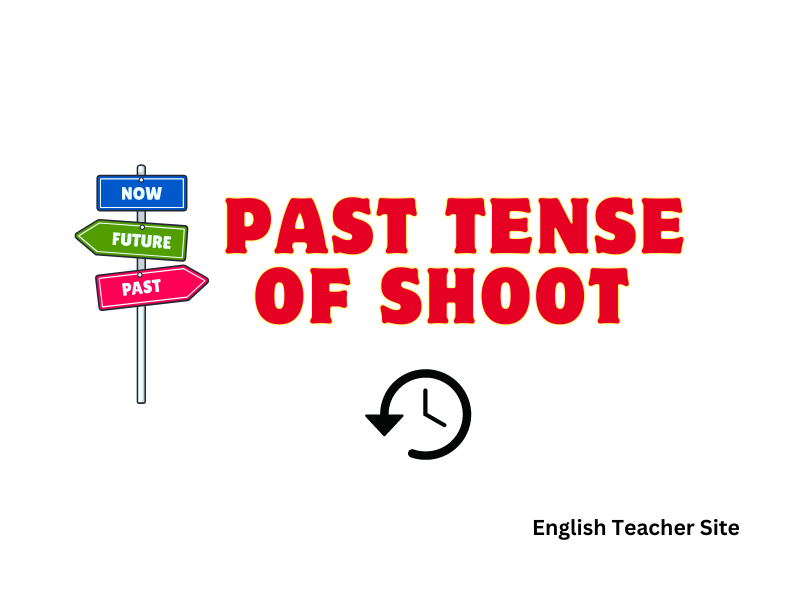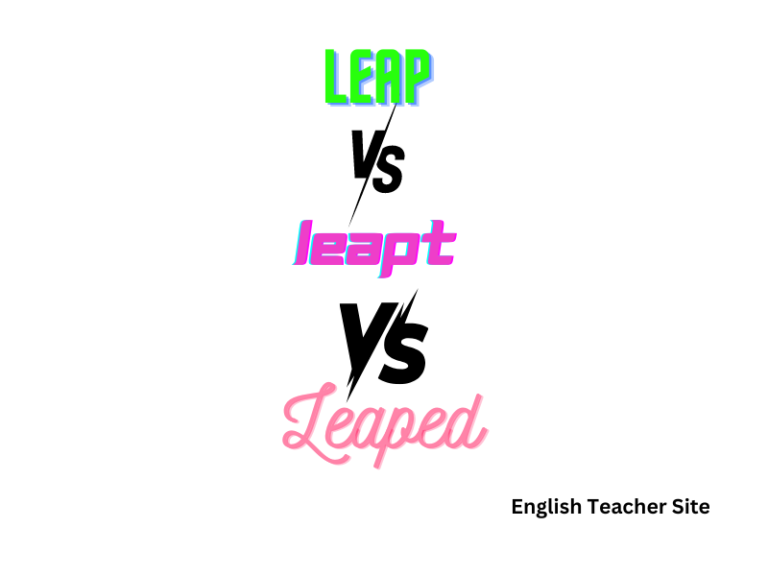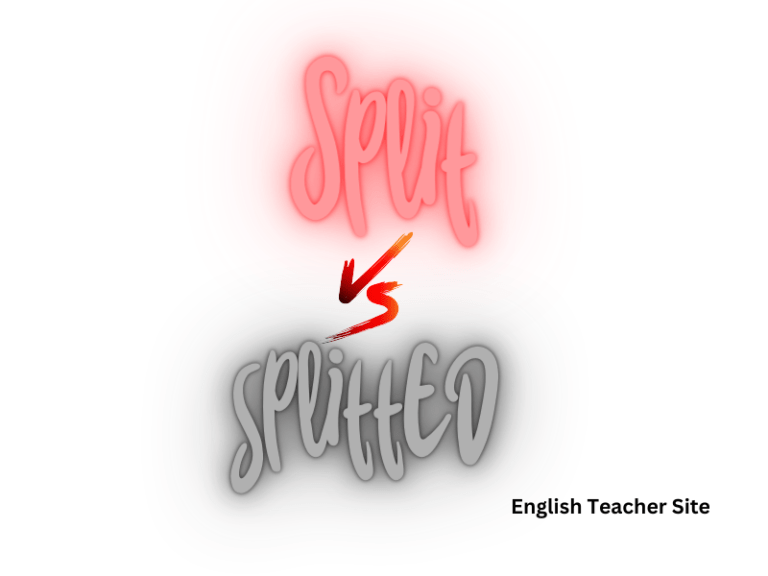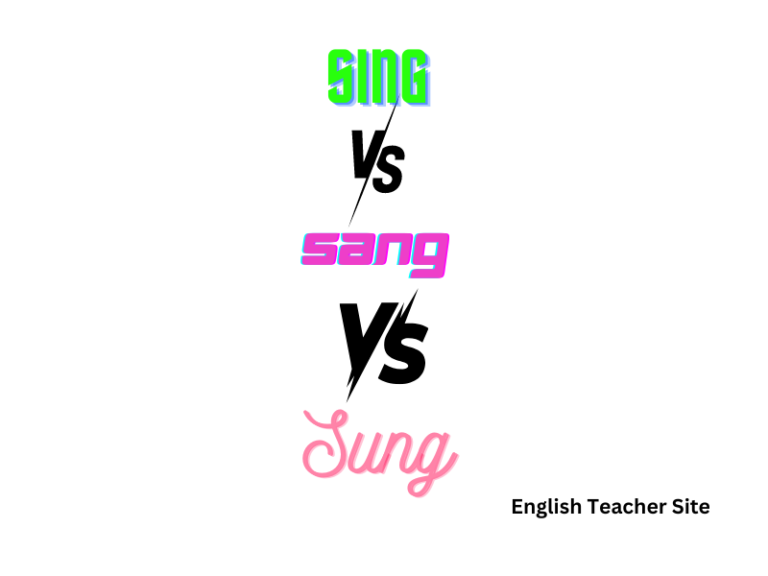What’s the Past Tense of Shoot: Understanding Verb Conjugation

- ‘Shoot‘ is an irregular verb with ‘shot’ as both the past tense and past participle form.
- ‘Shot‘ does not follow the regular verb pattern of adding -ed for the past tense.
- Distinguishing between the past tense and past participle of ‘shoot’ is important, although they are the same word.
When it comes to the past form of ‘shoot,’ it is crucial to recognize that ‘shoot’ is an irregular verb. This means that it does not follow the standard pattern of adding -ed to create the past tense. Instead, the past tense of ‘shoot’ is ‘shot.’ The confusion often arises when differentiating between the simple past tense and the past participle, which are identical for this particular verb.
What’s the Past Tense of Shoot?
The simple past tense of “shoot” is “shot.” It’s an irregular verb, meaning it does not follow the regular convention of adding “-ed” to form its past tense.
The English verb “shoot” changes form depending on the tense it’s used in. To better understand, here’s a breakdown:
| Tense | Conjugation |
|---|---|
| Simple Present | shoot |
| Simple Past | shot |
| Past Participle | shot |
When constructing sentences with “shoot” in the past tense, one applies “shot” as both the simple past tense and past participle. See examples below:
- Simple Past: The hunter shot the arrow accurately.
- Past Participle: The targets had been shot by the end of the day.
It’s worth noting that the term “shotten” is an archaic form of the past participle and is rarely used in modern English.
Here are more examples using different aspects of the past tense for “shoot”:
- Present Perfect: They have shot baskets every morning this week.
- Pluperfect (Past Perfect): She had shot all the clay pigeons by noon.
Verb Forms of Shoot
Present Tense:
- Singular: He/She/It shoots
- Plural: They shoot
Past Tense:
- Singular and Plural: He/She/It/They shot
Past Participle:
- Has/Have shot
For example, the sentence “They shoot arrows at the target” uses the present tense form, while “Yesterday, she shot an arrow at the target” demonstrates the past tense usage. Utilizing the past participle, one might say, “He has shot arrows in competitions before.”
| Tense | Singular Form | Plural Form |
|---|---|---|
| Present | shoots | shoot |
| Past | shot | shot |
| Past Participle | has/have shot | have shot |
The verb “shoot” follows a pattern found in strong, irregular verbs, where the past tense and past participle form do not adhere to the regular ‘-ed’ ending. Instead, the word changes to “shot” for both past actions accomplished and those that have been completed in relation to the present.
- Present Continuous: He is shooting a movie.
- Past Perfect: They had shot the film before the deadline.
| Tense | Example |
|---|---|
| Present Continuous | is/am/are shooting |
| Past Perfect | had shot |
Determining if Shoot is a Regular or Irregular Verb
Shoot is classified as an irregular verb. This classification is due to its unconventional shift from “shoot” to “shot” in both its simple past tense and past participle forms, as opposed to adopting the regular -ed suffix.
To provide clarity, observe the following tables demonstrating the contrast between the regular and irregular verb forms:
Regular Verb Conjugation:
| Base Form | Simple Past | Past Participle |
|---|---|---|
| ask | asked | asked |
| play | played | played |
| wash | washed | washed |
Irregular Verb Conjugation for “Shoot”:
| Base Form | Simple Past | Past Participle |
|---|---|---|
| shoot | shot | shot |
Note the absence of the -ed ending in the past forms of “shoot”, a clear indication of its irregularity.
- Regular verbs: end in -ed, e.g., ask → asked
- Irregular verbs: do not follow a pattern, e.g., shoot → shot
Differentiating Between Past Tense and Past Participle of Shoot
When discussing the verb “shoot,” it is vital to understand its past tense and past participle forms. The past tense of “shoot” is used to describe an action that has been completed in the past. Upon usage in a sentence, it often stands alone without the helping verbs.
On the other hand, the past participle is commonly utilized in perfect tenses and passive voice constructions. This form usually requires the aid of auxiliary verbs such as “have,” “has,” or “had.”
Let’s look at the two structures in tabular form to grasp their applications clearly:
Past Tense of Shoot:
| Subject | Past Tense |
|---|---|
| I | shot |
| You | shot |
| He/She/It | shot |
| We | shot |
| They | shot |
Past Participle of Shoot:
| Perfect Tense | Example Sentence |
|---|---|
| Present Perfect | He has shot the target five times. |
| Past Perfect | They had shot the scenes before sunset. |
| Future Perfect | She will have shot the arrow by then. |
Now, observe the use of “shot” in a list to highlight its versatility:
- Simple Past: He shot the ball through the hoop.
- Present Perfect: I have never shot a bow and arrow.
- Past Perfect: By the time we arrived, the photographer had already shot the pictures.
- Passive Voice: The film was shot in various locations around the world.
Examples of Present Tense Use of ‘Shoot’
Indefinite Present Tense
This tense is used for habitual or general actions. Here are three examples:
- He shoots arrows with remarkable precision.
- She shoots documentaries on wildlife.
- They shoot hoops every weekend.
Present Continuous Tense
Illustrating actions currently in progress, the present continuous tense of “shoot” is employed:
- He is shooting an email to his colleagues.
- She is shooting at the range.
- The photographer is shooting the sunrise.
Present Perfect Tense
This tense depicts an action that has occurred at some unspecified time before now:
- He has shot several award-winning photos.
- She has shot better scores each game this season.
- The team has shot ahead in the league rankings.
Below are two tables demonstrating the present tense forms of “shoot,” both singular and plural:
| Singular Subject | Present Tense Form |
|---|---|
| He, She, It | shoots |
| He, She, It | is shooting |
| He, She, It | has shot |
| Plural Subject | Present Tense Form |
|---|---|
| They | shoot |
| They | are shooting |
| They | have shot |
Examples of ‘Shoot’ in the Past Tense
The past tense and past participle of “shoot” is shot. This form is used in various sentences and tenses, and understanding its correct usage will enhance writing and speaking skills.
Here are two tables illustrating the conjugation of “shoot” in the past simple tense and the past perfect tense.
| Subject | Past Simple Tense |
|---|---|
| I | shot |
| You | shot |
| He/She/It | shot |
| We | shot |
| They | shot |
| Subject | Past Perfect Tense |
|---|---|
| I | had shot |
| You | had shot |
| He/She/It | had shot |
| We | had shot |
| They | had shot |
In literature and everyday conversation, various contexts may require the use of the past tense of “shoot,” as shown in the following examples:
- Simple past tense: “Yesterday, she shot several photographs during the trip.”
- Past continuous tense: “He was shooting the basketball when the bell rang.”
- Past perfect tense: “By the time they arrived, the movie director had already shot the final scene.”
- Past perfect continuous tense: “They had been shooting the documentary for months before it was released.”
Using these forms correctly allows for precise and clear recounting of actions.
- Use “shot” when referring to a single event in the past.
- “Had shot” is used when the action was completed before another past action.
- Italicize words for emphasis where necessary, like when distinguishing between different tenses.
Incorporating the past tense of “shoot” appropriately conveys a sense of confidence and command over the English language.
Examples of ‘Shoot’ as a Past Participle
In English grammar, the term “past participle” refers to a verb form typically used in perfect tenses and passive voice structures. For the verb ‘shoot’, ‘shot’ is the form that serves as the past participle. It is used to indicate an action that has been completed, often in relation to another time point. To clearly illustrate its application, consider the examples and their contexts in the tables below.
Active Voice Construction:
| Present Perfect Tense | Past Perfect Tense |
|---|---|
| He has shot the film. | She had shot the arrow before the show. |
| They have shot hoops all afternoon. | They had shot the documentary prior to the festival. |
In the examples above, ‘shot’ is paired with the auxiliary verbs ‘has’ or ‘had’ to construct perfect tenses, signifying actions completed at a certain time in the past.
Passive Voice Construction:
| Present Perfect Passive | Past Perfect Passive |
|---|---|
| The movie has been shot in Hollywood. | The target had been shot at by an unknown marksman. |
| These scenes have been shot without proper lighting. | The film had been shot in black and white long ago. |
In passive voice, the verb ‘shot’ is again accompanied by an auxiliary (‘has been’ or ‘had been’) to construct phrases indicating that the subject receives the action.
- Completed actions in a narrative: “After weeks of rehearsal, the actor finally had shot all his scenes.”
- Describing experiences: “They have shot various wildlife documentaries over the years.”
- Passive reports: “It was reported that the commercial had been shot in one continuous take.”
Origin of the Verb ‘Shoot’
The verb ‘shoot’ has its roots deeply embedded in the linguistic history of English. It originates from the Old English verb ‘sceotan,’ bearing the meanings to shoot (an arrow) and to propel. This verb was a class II strong verb, and has maintained its strong verb status through the centuries, altering its form in the past tense and past participles.
| Old English | Middle English | Modern English |
|---|---|---|
| sceotan | sheten | shoot |
| sceat | shot | shot (past) |
| scoten | – | shot (past participle) |
Throughout the evolution from Old to Middle English, the verb underwent phonetic changes, simplifying the spelling and pronunciation while maintaining its meaning. By Middle English, the word had transformed into ‘sheten,’ eventually leading to the contemporary form ‘shoot.’
Past Tense: The simple past tense of ‘shoot’ is ‘shot.’ This remains unaltered whether it’s in singular or plural form. Here’s how it is used:
- He shot the arrow.
- They shot the scene for the movie.
Past Participle: The past participle also remains as ‘shot.’ This is consistent in various tenses requiring a past participle. Examples include:
- She has shot the rifle.
- The scenes had been shot before the deadline.
In summary, from the Old English origins to its current use, ‘shoot’ has followed a phonological and morphological journey, maintaining its core meaning while modifying its form to fit the evolving language patterns. The word’s transformation reflects the linguistic shifts within English, showcasing the dynamic nature of verb conjugations over time.
Sources
1. Harper, Douglas. “Etymology of shoot.” Online Etymology Dictionary
My name is Khamis Maiouf. I am the creator of the English Teacher Site, dedicated to providing valuable resources and insights for students around the world. With a passion for education and a commitment to helping students enhance their skills, I aim to make English teaching more effective and enjoyable for both educators and students.






